Genealogy
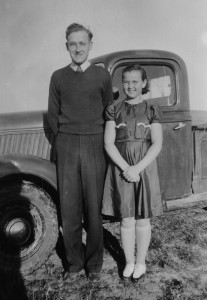
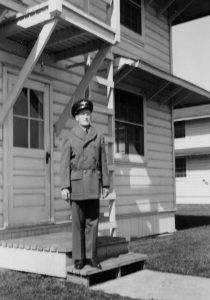 A few months after my husband, Bob’s uncle Frank Knox passed away, I was having an email conversation with Frank’s son, Greg, and we were discussing some of Frank’s time in the military, when Greg told me about his dad’s time in the Civilian Conservation Corps (CCC). The CCC was a public work relief program that operated from 1933 to 1942 in the United States for unemployed, unmarried men. Originally for young men ages 18–25, it was eventually expanded to ages 17–28. Right after Frank graduated from high school in 1937, which was in the middle of the Great Depression, he went to work for a local rancher. He got the job because of his experience in driving a team of horses on a mowing machine and a dump rake, which he learned helping out on his brother, Robert Knox’s sheep ranch. The farmer saw the value in hiring this young man to help with the alfalfa harvest of that season.
A few months after my husband, Bob’s uncle Frank Knox passed away, I was having an email conversation with Frank’s son, Greg, and we were discussing some of Frank’s time in the military, when Greg told me about his dad’s time in the Civilian Conservation Corps (CCC). The CCC was a public work relief program that operated from 1933 to 1942 in the United States for unemployed, unmarried men. Originally for young men ages 18–25, it was eventually expanded to ages 17–28. Right after Frank graduated from high school in 1937, which was in the middle of the Great Depression, he went to work for a local rancher. He got the job because of his experience in driving a team of horses on a mowing machine and a dump rake, which he learned helping out on his brother, Robert Knox’s sheep ranch. The farmer saw the value in hiring this young man to help with the alfalfa harvest of that season.
Nevertheless, the job was obviously temporary, it was a relief when on July 1, 1937, Frank made the decision to join the CCCs. Frank says that the decision to join the CCCs was purely out of desperation. Frank received his notice and was ordered to train in Miles City, Montana. Frank was stationed in Haugen, Montana attached to the 956 Company which was working in conjunction with the Forest Service. The site was Camp F9 with the forest service. Frank spent 18 months with this company, but was allowed to take 9 months leave in the middle of that service, though he never quite knew how that had been arranged. He went to his Freshman year in college, and then returned to the CCC to complete his 18 months of service. In the CCCs, Frank would make $30 a month, $25 of which would go home to help the family. Because he also received room and board, the $5 spending money he had a month was enough. Franks says he didn’t want for anything, and in fact, gained 15 pounds in those first months. Frank fought several forest fires in his time in the CCCs, but he knew that fire fighting was really not for him. Frank went to work in the kitchen, and then later applied for and received the position of assistant educator, and he was the editor of The Mountain Chieftain the camp newspaper. Frank also taught the Agriculture class to 8th grade boys in the area.
When Frank was released from the CCCs, he moved back to his parents home, now in Ellensburg, Washington, where he began his college career at Central Washington College of Education. Frank didn’t know that he was a 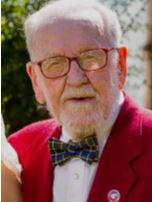
 born teacher, and so he went to college and earned a Bachelors Degree in electrical engineering from Washington State College, now Washington State University, in the spring of 1948. He had a job lined up with the Clark County Public Utility District in Vancouver, Washington, but the Vanport Flood on the lower Columbia River wiped out the new post-war housing in the Portland area, causing the job offer to be withdrawn. Frank was offered an instructor’s position in the electrical engineering department at Washington State College, and thus began his 37 year career at Washington State University. Frank was an amazing man, and very smart. It was a pleasure knowing him. Today would have been Great Uncle Frank’s 99th birthday. Happy birthday in Heaven Uncle Frank. We love and miss you very much.
born teacher, and so he went to college and earned a Bachelors Degree in electrical engineering from Washington State College, now Washington State University, in the spring of 1948. He had a job lined up with the Clark County Public Utility District in Vancouver, Washington, but the Vanport Flood on the lower Columbia River wiped out the new post-war housing in the Portland area, causing the job offer to be withdrawn. Frank was offered an instructor’s position in the electrical engineering department at Washington State College, and thus began his 37 year career at Washington State University. Frank was an amazing man, and very smart. It was a pleasure knowing him. Today would have been Great Uncle Frank’s 99th birthday. Happy birthday in Heaven Uncle Frank. We love and miss you very much.
 This past summer, my sister, Cheryl Masterson; my cousin, Pam Wendling; and I went to visit Pam’s dad, our Uncle Bill Spencer at the nursing home where he lives. Uncle Bill has dementia, probably Alzheimer’s disease, and so how the visits go, depends on the kind of day he is having. The day of our visit was a really good day. Uncle Bill may not have known who we all were, and even some details about our lives, but he had some funny stories to tell us…one of which was how his brother, our dad, Allen Spencer had never gotten married!! That one was new to my sister and me, who are the eldest of Dad’s five daughters with his wife, our mom, Collene Byer Spencer. I guess Uncle Bill’s mind went back to the pre-Collene era of Dad’s life.
This past summer, my sister, Cheryl Masterson; my cousin, Pam Wendling; and I went to visit Pam’s dad, our Uncle Bill Spencer at the nursing home where he lives. Uncle Bill has dementia, probably Alzheimer’s disease, and so how the visits go, depends on the kind of day he is having. The day of our visit was a really good day. Uncle Bill may not have known who we all were, and even some details about our lives, but he had some funny stories to tell us…one of which was how his brother, our dad, Allen Spencer had never gotten married!! That one was new to my sister and me, who are the eldest of Dad’s five daughters with his wife, our mom, Collene Byer Spencer. I guess Uncle Bill’s mind went back to the pre-Collene era of Dad’s life.
Uncle Bill also told us about the days on the family farm. I think my sister and I always  thought of it as a small little patch of land…maybe 5 acres or so, but Uncle Bill told us that the farm was actually 80 acres. The farm was big enough to grow enough vegetables to sell them exclusively to Stokely Foods Inc. Stokely foods is a large company and it was founded on August 18, 1943, later merged with Van Camp’s, and then sold the Stokely brand to Seneca Foods in 1985, and the Van Camp’s brand to ConAgra in 1995. I guess you could say that the Spencer farm got in on the ground floor of Stokely Foods, Inc. This was really interesting to us, because it was confirmed by Uncle Bill’s cousin, Les Schumacher. I suppose Cheryl and I should have assumed that the farm was bigger than we thought, because they grew hay, and it took days to get it all stacked, but when you didn’t grow up on a farm, I guess you don’t really have a good way to gauge such things. I think we should have had some inkling, however,
thought of it as a small little patch of land…maybe 5 acres or so, but Uncle Bill told us that the farm was actually 80 acres. The farm was big enough to grow enough vegetables to sell them exclusively to Stokely Foods Inc. Stokely foods is a large company and it was founded on August 18, 1943, later merged with Van Camp’s, and then sold the Stokely brand to Seneca Foods in 1985, and the Van Camp’s brand to ConAgra in 1995. I guess you could say that the Spencer farm got in on the ground floor of Stokely Foods, Inc. This was really interesting to us, because it was confirmed by Uncle Bill’s cousin, Les Schumacher. I suppose Cheryl and I should have assumed that the farm was bigger than we thought, because they grew hay, and it took days to get it all stacked, but when you didn’t grow up on a farm, I guess you don’t really have a good way to gauge such things. I think we should have had some inkling, however,  because the pictures we have seen should have told the tale…to some degree at least.
because the pictures we have seen should have told the tale…to some degree at least.
As our visit with Uncle Bill came to a close, we found ourselves very sad about the speed with which the time had passed. We don’t get to see him very much, and he is such a precious person in our lives. He was really in rare form, laughing and smiling a lot. There were no awkward moments when no one knew what to say, and Uncle Bill carried much of the conversation, which was absolutely wonderful. Our only regret is that we can’t get up there to see him more often. Today is Uncle Bill’s 97th birthday. That’s amazing…97 and going strong. Happy 97th birthday Uncle Bill!! Have a great day!! We love you!!
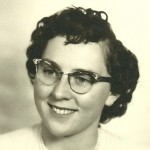
My husband’s aunt, Esther Hein lives in Oregon, and it’s not always easy for her to get back home to Forsyth, Montana to visit her brothers, Eddie and Butch Hein, who live there with their families. Last January she made the trip, and once she was there, she might have found herself wondering if January was the best time to have done that. Montana gets quite a bit of snow, and last January was no exception. They got a large amount of snow, and Esther found herself shoveling the sidewalks and not really getting anywhere with removing all the snow. In the end, they spent a lot of time indoors, but it was a very nice visit anyway.
Things got a little tough for Esther this past fall, when he got Shingles. If you have 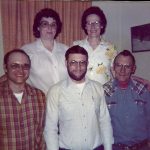 never dealt with Shingles, or had them yourself, you have no idea how bad they really are. my husband had them in February of 2013, and they were awful.They itch and burn at the same time. They leave scars that never seem to completely go away. Some people get physically ill, and unfortunately, Esther was one of those. She was really sick for a while, and that can take a long time to come back from. I’m sure she was weak for a while.
never dealt with Shingles, or had them yourself, you have no idea how bad they really are. my husband had them in February of 2013, and they were awful.They itch and burn at the same time. They leave scars that never seem to completely go away. Some people get physically ill, and unfortunately, Esther was one of those. She was really sick for a while, and that can take a long time to come back from. I’m sure she was weak for a while.
As winter approached, Esther began to feel better, and was able to go on the family’s annual trip to the Diamond Lake Resort to go snow shoeing. I’m sure that with how she had been feeling, she wasn’t sure she would feel up to going this year, but I’m glad she did. Esther likes to stay in good shape. It is important for all  of us. She has taken up water exercise. There is an aquatic open pool near her home and she has been going there three times a week to do open end exercises. Esther loves going, and says that she feels so much better these days.
of us. She has taken up water exercise. There is an aquatic open pool near her home and she has been going there three times a week to do open end exercises. Esther loves going, and says that she feels so much better these days.
Esther has long been a crafty person, and she has plans to make some quilts this next year. When you don’t feel well, you can’t do justice to your hobbies. Esther is an artist,and in the past has don’t quite a bit of painting. I’m just thankful that her hobbies have not had to be laid aside. Today is Esther’s 78th birthday. Happy birthday Esther!! Have a great day!! We love you!!
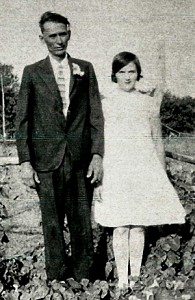 The Christmas season is always exciting, for old and young alike, and Christmas Eve is often a very hard day to settle down for. The reasons for the excitement vary. They are usually centered around the Christmas holiday, but not always. For my mother’s family, Christmas Eve holds an extra special significance because it was also their parents, wedding anniversary. Grandma Hattie and Grandpa George Byer were married on December 24, 1927. I always wondered why people would pick a holiday to get married on, but in times past, it was somewhat common. People could not easily get all their family members into town for a wedding, but people were often already getting together for a holiday. Of course, weddings weren’t often the great big affair that they can be these days either. Often the bride simply wore her Sunday dress, and carried a bouquet of wild flowers. I suppose it would be similar to the weddings held at the justice of the peace these days.
The Christmas season is always exciting, for old and young alike, and Christmas Eve is often a very hard day to settle down for. The reasons for the excitement vary. They are usually centered around the Christmas holiday, but not always. For my mother’s family, Christmas Eve holds an extra special significance because it was also their parents, wedding anniversary. Grandma Hattie and Grandpa George Byer were married on December 24, 1927. I always wondered why people would pick a holiday to get married on, but in times past, it was somewhat common. People could not easily get all their family members into town for a wedding, but people were often already getting together for a holiday. Of course, weddings weren’t often the great big affair that they can be these days either. Often the bride simply wore her Sunday dress, and carried a bouquet of wild flowers. I suppose it would be similar to the weddings held at the justice of the peace these days.
The reasons for the date and the simplicity of a wedding really didn’t make much difference, especially concerning my grandparents, because they were very much in love all of the years of their married lives together. I still remember all the times that Grandpa looked at Grandma with total love in his eyes. Grandma always knew that Grandpa loved her very much. Their marriage was blessed with nine children, four of whom are now in Heaven with them. They also have five sons-in-law and several grandchildren and great grandchildren in Heaven with them too. I would imagine that all of them are having a wonderful time there, because there are no tears and no sadness there. Of course, we here, who are left behind miss all of them terribly, and can’t wait to see them again.
Grandpa was a hard worker, who held many jobs in his lifetime. He was always a very respected worker. They 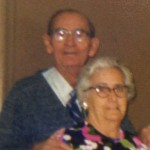
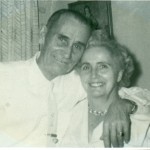 knew he could be counted on to be there and to do his job well. Grandma was always a stay-at-home mom, who never learned to drive a car. It was just something she saw no need for. She worked in the home, and she cooked…man could she cook!! And there was always plenty of food on her table…no matter how many extras might show up. No one was turned away, and Grandma’s table was famous in this area. Today would have been my grandparents’ 91st anniversary. Happy anniversary in Heaven, Grandma and Grandpa. We love and miss you both very much.
knew he could be counted on to be there and to do his job well. Grandma was always a stay-at-home mom, who never learned to drive a car. It was just something she saw no need for. She worked in the home, and she cooked…man could she cook!! And there was always plenty of food on her table…no matter how many extras might show up. No one was turned away, and Grandma’s table was famous in this area. Today would have been my grandparents’ 91st anniversary. Happy anniversary in Heaven, Grandma and Grandpa. We love and miss you both very much.
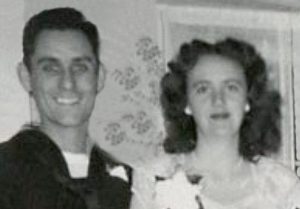 Most of the time, the oldest sibling is the first to marry, and true to that thought, my Aunt Evelyn Byer was the first of my Grandma and Grandpa Byer’s nine children to marry. The love of her life turned out to be George Hushman, a young man who was raised in the children’s home in Casper, Wyoming, after losing both of his parents at a very young age. His mother, Wyoma Woodfork Hushman passed away when George was just 11 years old, and his dad, George Wave Hushman was killed in action during World War II, when George was just 17 years old. Uncle George’s dad was unable to take care of him after his mother died, so at some point he ended up in the
Most of the time, the oldest sibling is the first to marry, and true to that thought, my Aunt Evelyn Byer was the first of my Grandma and Grandpa Byer’s nine children to marry. The love of her life turned out to be George Hushman, a young man who was raised in the children’s home in Casper, Wyoming, after losing both of his parents at a very young age. His mother, Wyoma Woodfork Hushman passed away when George was just 11 years old, and his dad, George Wave Hushman was killed in action during World War II, when George was just 17 years old. Uncle George’s dad was unable to take care of him after his mother died, so at some point he ended up in the 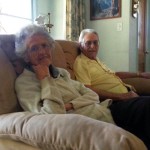 children’s home. I’m sure many people would think that his would always be a sad story, but it wasn’t. Uncle George had a friend James Wesley Saint John…who went by Wes. They were good friends, and Uncle George spent a lot of time at his parents house. Wes’ mom, Hettie Saint John became like an adopted mom to Uncle George. She was a very stabilizing influence in his life. As the years went on the two men grew up and went into the service. Unfortunately, only one of them would come back home. Wes was lost at sea in 1944, and they never found out what happened to him. It was a hard loss for Hettie, and for Uncle George.
children’s home. I’m sure many people would think that his would always be a sad story, but it wasn’t. Uncle George had a friend James Wesley Saint John…who went by Wes. They were good friends, and Uncle George spent a lot of time at his parents house. Wes’ mom, Hettie Saint John became like an adopted mom to Uncle George. She was a very stabilizing influence in his life. As the years went on the two men grew up and went into the service. Unfortunately, only one of them would come back home. Wes was lost at sea in 1944, and they never found out what happened to him. It was a hard loss for Hettie, and for Uncle George.
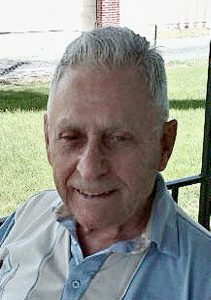
Uncle George went on to marry my Aunt Evelyn on September 1, 1947. While the sadness of losing his friend and not knowing any of his family lingered, Uncle George was a very happy family man. He and Aunt Evelyn would be blessed with five children, and they would be married for almost 68 years before Aunt Evelyn’s passing in 2015. Uncle George has been in frail health since Aunt Evelyn’s passing, but I know that their time together is still vivid in his mind, because she was the love of his life. I remember so many fun times they had with my parents. they bowled together, double dated, went to dances, and spent time at each others house. They were more that sisters and brothers-in-law, they were best friends. I really miss those good times they had, because w, their kids got to have those good times too. Today is Uncle George’s 92nd birthday. What an amazing milestone that is. Happy birthday Uncle George!! Have a great day!! We love you!!
 My mother-in-law, Joann Schulenberg was the eldest of her parents three living children. Her older brother Everett passed away at birth. The second living child was Linda Cole, who was born 15 years after her older sister. Following Linda, youngest sister, Margaret was born three years later. It was almost like having two separate families, because Joann was practically grown up by the time her younger siblings arrived. In reality, Linda and Margee grew up with nieces and nephews, some of whom were closer in age to them than their own sister was, and there sister was almost like a second mother to them.
My mother-in-law, Joann Schulenberg was the eldest of her parents three living children. Her older brother Everett passed away at birth. The second living child was Linda Cole, who was born 15 years after her older sister. Following Linda, youngest sister, Margaret was born three years later. It was almost like having two separate families, because Joann was practically grown up by the time her younger siblings arrived. In reality, Linda and Margee grew up with nieces and nephews, some of whom were closer in age to them than their own sister was, and there sister was almost like a second mother to them.
Linda grew up and married Bobby Cole on December 29, 1965. Their marriage was blessed with a daughter, Sheila and a son, Patrick, both of whom are married and have children of their own now. Linda and Bobby ran a hotel in Kennebec, South Dakota for most of the years while their children were growing up. They loved the small town of Kennebec, and the social scene in the area. For a number of years, they were a part of a square dance club. I remember all their great dance clothes, and how much they loved being part of that club. I think it was the most fun they had in a long time.
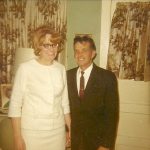 Unfortunately, the economy in Kennebec wasn’t doing too well, and after they lost their hotel to a fire, they decided that it was time for a change. The decided to move to Winnemucca, Nevada. they thought that the gambling might be just the ticket for them. The both found work in the casinos there, and dabbled in gambling on their time off. They really enjoyed their lives in Winnemucca. They were in a warmer climate, and far away from the harsh South Dakota winters. They would live out the remainder of their lives in Winnemucca. Bobby passed away on May 30, 2014, of cancer. After his passing, Linda seemed content to stay in Winnemucca, until her passing on September 22, 2016 of a heart attack. We miss them both very much. Today would have been Linda’s 71st birthday. Happy birthday in heaven Linda. We love you.
Unfortunately, the economy in Kennebec wasn’t doing too well, and after they lost their hotel to a fire, they decided that it was time for a change. The decided to move to Winnemucca, Nevada. they thought that the gambling might be just the ticket for them. The both found work in the casinos there, and dabbled in gambling on their time off. They really enjoyed their lives in Winnemucca. They were in a warmer climate, and far away from the harsh South Dakota winters. They would live out the remainder of their lives in Winnemucca. Bobby passed away on May 30, 2014, of cancer. After his passing, Linda seemed content to stay in Winnemucca, until her passing on September 22, 2016 of a heart attack. We miss them both very much. Today would have been Linda’s 71st birthday. Happy birthday in heaven Linda. We love you.

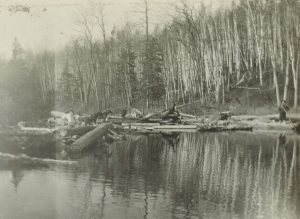 Established as a national forest in 1909, Superior National Forest is located in far northern Minnesota. Big pine timber logging began in the Superior National Forest in the 1890s and continued into the 1920s. Logging was not easy in Superior National Forest, and much of the area remained untouched because of the border lakes region, which presented numerous challenges to the logging companies in accessing and harvesting the stands of timber. In the 1890s, vast extents of the border lakes forests had been stripped away in Michigan and Wisconsin. The early logging was accomplished by means of river driving of logs. That was one of the types of logging that my grandfather was involved in. The logs were cut down,and then floated down the river to the saw mills. The method was a good one, but it could also be dangerous. Many a man was pinched between the logs, and many died. I’m very thankful my grandfather, Allen Luther Spencer was not one of those poor men who lost their lives doing this job. As timber near rivers became depleted, railroad logging became the primary method of getting the wood to the mill. Frozen ground conditions in the winter steered the logging industry to build ice roads providing greater access to timber stands. Logging after 1929 focused more and more on pulp species and the wood products industry.
Established as a national forest in 1909, Superior National Forest is located in far northern Minnesota. Big pine timber logging began in the Superior National Forest in the 1890s and continued into the 1920s. Logging was not easy in Superior National Forest, and much of the area remained untouched because of the border lakes region, which presented numerous challenges to the logging companies in accessing and harvesting the stands of timber. In the 1890s, vast extents of the border lakes forests had been stripped away in Michigan and Wisconsin. The early logging was accomplished by means of river driving of logs. That was one of the types of logging that my grandfather was involved in. The logs were cut down,and then floated down the river to the saw mills. The method was a good one, but it could also be dangerous. Many a man was pinched between the logs, and many died. I’m very thankful my grandfather, Allen Luther Spencer was not one of those poor men who lost their lives doing this job. As timber near rivers became depleted, railroad logging became the primary method of getting the wood to the mill. Frozen ground conditions in the winter steered the logging industry to build ice roads providing greater access to timber stands. Logging after 1929 focused more and more on pulp species and the wood products industry.
Soon, it became evident that the logging industry, while a good a profitable industry, had the potential to deplete the natural resources in the Superior National Forest. In 1921, Arthur Carhart (Forest Landscape Architect) published “Preliminary Prospectus: An Outline Plan for the Recreational Development of the Superior National Forest.” It was released following a survey conducted by Carhart and Forest Guard Soderback in the Boundary Waters region. This publication began to set the framework for the future designation of the BWCAW.
In 1930, Shipstead-Newton-Nolan Act was passed placing restrictions aimed at preserving the wilderness nature of lake and stream shorelines. By 1934, President Franklin D. Roosevelt designated the Quetico-Superior Committee to work with government agencies in the conservation, preservation, and use of northeast Minnesota’s wilderness areas. 1948 brought the Thye-Blatnik Act authorized the federal government to acquire private land holdings within roadless areas, thereby increasing federal acreage within the boundary waters roadless area. In 1949, the passage of Executive Order #10092, established an airspace boundary over the boundary waters roadless area. Highly controversial, this order effectively ended a particular type of recreation in the boundary waters, that of the remote fly-in resort. Resort operators had until 1951 to halt air traffic within 4000 feet of the roadless area.In 1958, The Superior Roadless Areas were renamed the Boundary Waters Canoe Area (BWCA). Conflict over motorized use in the roadless area increased during this time. The passage of the national Wilderness Act in 1964, with special provision regarding the BWCA, allowed some motorized use 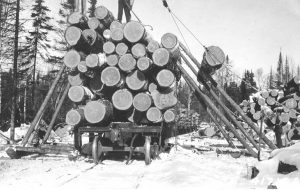
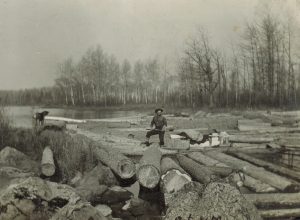 and logging within the Boundary Water’s wilderness boundaries, but by 1978, with the passage of the Boundary Waters Canoe Area Wilderness Act, which was specific to the BWCAW. This legislation eliminated logging and snowmobiling, restricted mining and allowed motorboats on 1/4 of the water area. While logging is necessary, I can’t help but agree with the preservation of the beautiful Superior National Forest.
and logging within the Boundary Water’s wilderness boundaries, but by 1978, with the passage of the Boundary Waters Canoe Area Wilderness Act, which was specific to the BWCAW. This legislation eliminated logging and snowmobiling, restricted mining and allowed motorboats on 1/4 of the water area. While logging is necessary, I can’t help but agree with the preservation of the beautiful Superior National Forest.
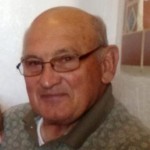 I didn’t know my husband’s Uncle Butch Schulenberg when he was young of course, but I have had the opportunity to get to know him over the past few years, and I feel very privileged to know him. He is a kind and loving man, who loves his family very much. I think that when it comes to his grandchildren, he is probably a big teddy bear, and I think they all know it. Of course, he would never admit it, but his family knows.
I didn’t know my husband’s Uncle Butch Schulenberg when he was young of course, but I have had the opportunity to get to know him over the past few years, and I feel very privileged to know him. He is a kind and loving man, who loves his family very much. I think that when it comes to his grandchildren, he is probably a big teddy bear, and I think they all know it. Of course, he would never admit it, but his family knows.
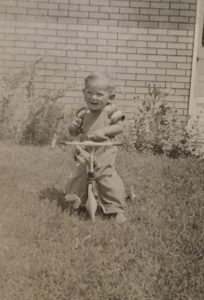
As a young boy though, the youngest of his dad’s children, I think he must have been quite a kid. I don’t know if growing up as the sheriff’s son would have made him think he could get away with more than most people, but I think he might have had a side of him that might consider trying it to see how things went. Of course, not as a little boy. From what I’ve seen in the pictures he let me copy, he was a little boy who maybe liked his wheels. I found a picture of him on his tricycle, and later a picture of him with a car. The boy going from one set of wheels to another. It looked like a 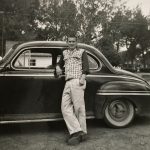 pretty nice car to me. I imagine he was well liked in high school…and I can see why people liked him, because he is a very likable guy.
pretty nice car to me. I imagine he was well liked in high school…and I can see why people liked him, because he is a very likable guy.
Not much has changed with Butch, at least not in his personality. He is still the kind of guy you want to be around. He always has nice things to say about people, and he always makes you feel welcome. Anyone who knows him feels blessed to know him. I haven’t known him well for my whole time in this family, but I consider him to be one of my very favorite people. And today is Butch’s birthday. Happy birthday Butch!! Have a great day!! We love you!!
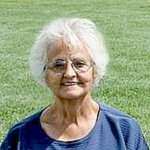 My aunt, Sandy Pattan is the youngest of my grandparents, George and Hattie Byer’s nine children. Because she is the youngest, she was at home while her older siblings were married. She got to witness the changes that occurred as each of her siblings married and moved into their own homes. Of course, she was very young when some of these changes occurred, and even found herself playing with her nieces and nephews, because they were close to her age. Because of that and the fact that she grew up having brothers and sisters-in-law, so also got to hear all the stories of their lives and their family’s lives.
My aunt, Sandy Pattan is the youngest of my grandparents, George and Hattie Byer’s nine children. Because she is the youngest, she was at home while her older siblings were married. She got to witness the changes that occurred as each of her siblings married and moved into their own homes. Of course, she was very young when some of these changes occurred, and even found herself playing with her nieces and nephews, because they were close to her age. Because of that and the fact that she grew up having brothers and sisters-in-law, so also got to hear all the stories of their lives and their family’s lives.
That has largely made Aunt Sandy my go-to person or the family history stories. When 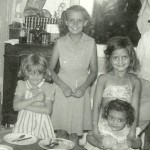 Aunt Sandy was a little girl, Grandma and Grandpa Byer would tell her all the stories about the old days.Most of us don’t really take much of an interest in those stories as young people,mostly because we think there will always be time to hear all about it later. All too often, by the time we are finally interested, the people who now the stories are gone, and we find ourselves filled with regret, and there is nothing we can do about it. For that reason, I feel very blessed to have both opportunity and interest at the same time in my conversations with Aunt Sandy.
Aunt Sandy was a little girl, Grandma and Grandpa Byer would tell her all the stories about the old days.Most of us don’t really take much of an interest in those stories as young people,mostly because we think there will always be time to hear all about it later. All too often, by the time we are finally interested, the people who now the stories are gone, and we find ourselves filled with regret, and there is nothing we can do about it. For that reason, I feel very blessed to have both opportunity and interest at the same time in my conversations with Aunt Sandy.
Aunt Sandy has such a caring heart. As I have spent time talking to Aunt Sandy we have really become quite  close. We don’t have to be talking about anything specifically, we just enjoy talking. I love hearing about her sons, John and Jim; granddaughters, Ashley and Alicia; and her great grandson, Brian. And she loves to hear about my family too. She has been working on some remodeling on her house, and things are going well. She has also been going through boxes of old treasures. I love that. You never know what you will find. Aunt Sandy has come across old family pictures, and other treasures too. It is exciting, and I love hearing all about it. That is one of the many things we have in common. Of course, if you ask me, she is the real treasure. Today is Aunt Sandy’s birthday. Happy birthday Aunt Sandy!! Have a great day!! We love you!!
close. We don’t have to be talking about anything specifically, we just enjoy talking. I love hearing about her sons, John and Jim; granddaughters, Ashley and Alicia; and her great grandson, Brian. And she loves to hear about my family too. She has been working on some remodeling on her house, and things are going well. She has also been going through boxes of old treasures. I love that. You never know what you will find. Aunt Sandy has come across old family pictures, and other treasures too. It is exciting, and I love hearing all about it. That is one of the many things we have in common. Of course, if you ask me, she is the real treasure. Today is Aunt Sandy’s birthday. Happy birthday Aunt Sandy!! Have a great day!! We love you!!
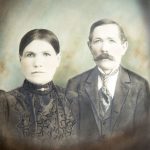 As American became populated, the immigrants brought with them, so much more than their belongings. I recently received my copy of the “Wisconsin Magazine of History” from the Wisconsin Historical Society, of which I am a member, and one of the cover stories was entitled, “German Brewing in Early Wisconsin.” Because I come from a strong German background, and was born in Wisconsin, this story was of particular interest to me. It seems that, while beer brewing in the United States began with the English, in the mid-1800s, but beer drinking was common in much of Europe, and in all levels of society, which surprised me some. We tend to expect that, higher society people would never drink beer, but the reality is that that is only in more recent years. The reality is that because on the lack of knowledge of sanitation and disease causing pathogens, many of the drinks people could make out of ordinary water really weren’t very safe to drink. Beer, on the other hand because it had to be boiled and fermented, did away with all those organisms, making it safe to drink. That made beer a very common drink by the Middle Ages. It was even given to the children.
As American became populated, the immigrants brought with them, so much more than their belongings. I recently received my copy of the “Wisconsin Magazine of History” from the Wisconsin Historical Society, of which I am a member, and one of the cover stories was entitled, “German Brewing in Early Wisconsin.” Because I come from a strong German background, and was born in Wisconsin, this story was of particular interest to me. It seems that, while beer brewing in the United States began with the English, in the mid-1800s, but beer drinking was common in much of Europe, and in all levels of society, which surprised me some. We tend to expect that, higher society people would never drink beer, but the reality is that that is only in more recent years. The reality is that because on the lack of knowledge of sanitation and disease causing pathogens, many of the drinks people could make out of ordinary water really weren’t very safe to drink. Beer, on the other hand because it had to be boiled and fermented, did away with all those organisms, making it safe to drink. That made beer a very common drink by the Middle Ages. It was even given to the children.
Upon reading this, I wondered if my German great grandparents made beer in their home. I thought about the 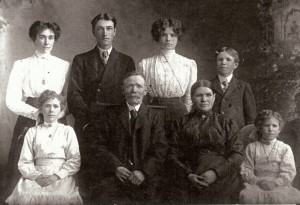 journal my Aunt Bertha Schumacher had written, but she never mentioned beer. I suppose it could have been because it was so common in the home, that it never occurred to her. Or could it have been because they were the exception to the rule, and didn’t really drink beer in their household. It’s hard to say, but when something is as much a cultural and traditional practice, it seems to me unlikely that they would not have done thing in the same way their families did at home. After studying German in high school, I knew that beer was talked about in many of the dialogues we learned. It just seemed to me, like it was a way to learn the words, and now a way of life, but perhaps I had been wrong on that. I suppose it could have been that because family meals in the United States, these days anyway, did not include beer, wine, or any other alcoholic drink of any kind, on a regular basis, was pretty much unheard of. It just didn’t seem like an normal activity, but in the time that my German great grandparents immigrated to the United States, drinking beer was very
journal my Aunt Bertha Schumacher had written, but she never mentioned beer. I suppose it could have been because it was so common in the home, that it never occurred to her. Or could it have been because they were the exception to the rule, and didn’t really drink beer in their household. It’s hard to say, but when something is as much a cultural and traditional practice, it seems to me unlikely that they would not have done thing in the same way their families did at home. After studying German in high school, I knew that beer was talked about in many of the dialogues we learned. It just seemed to me, like it was a way to learn the words, and now a way of life, but perhaps I had been wrong on that. I suppose it could have been that because family meals in the United States, these days anyway, did not include beer, wine, or any other alcoholic drink of any kind, on a regular basis, was pretty much unheard of. It just didn’t seem like an normal activity, but in the time that my German great grandparents immigrated to the United States, drinking beer was very 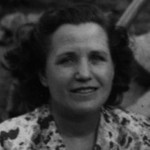 normal, so I have no reason to believe that they didn’t drink it, just like everyone else.
normal, so I have no reason to believe that they didn’t drink it, just like everyone else.
When the German immigrants arrived in America, they were required to brew their own beer. Since wheat was abundant, barley and hops easy to grow, they had no problem making their beer. I must wonder if they used whet at that time, though, because the German recipe did not include wheat, because it was needed for bread in Germany, and it wasn’t as abundant as it was in the United States. The east coast with its heat and long growing season, didn’t make a good brewing climate. When the people moved to Wisconsin, they found the climate, especially in the Milwaukee area was perfect, and I suppose the rest is history, for German beer and for Milwaukee.

